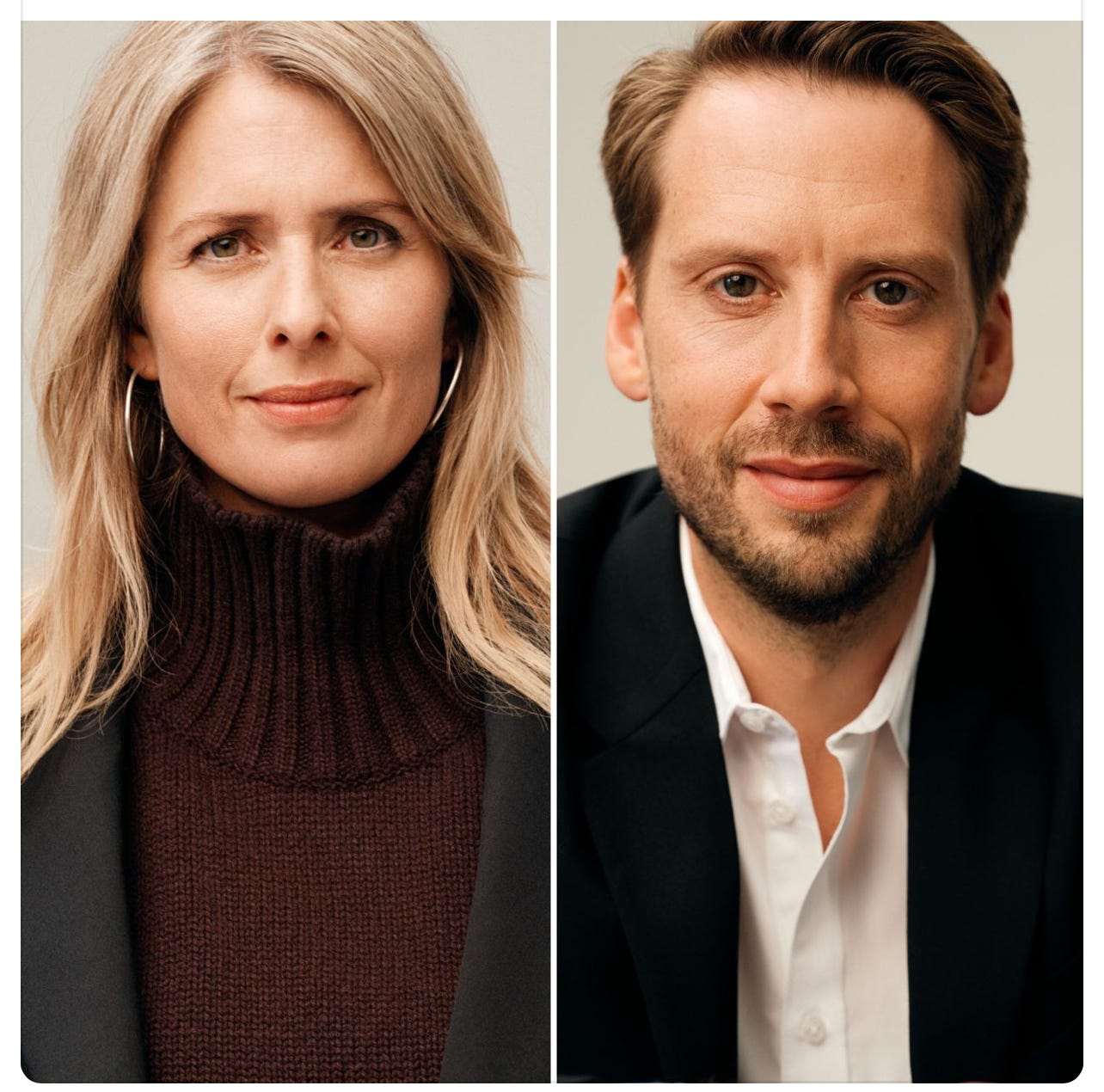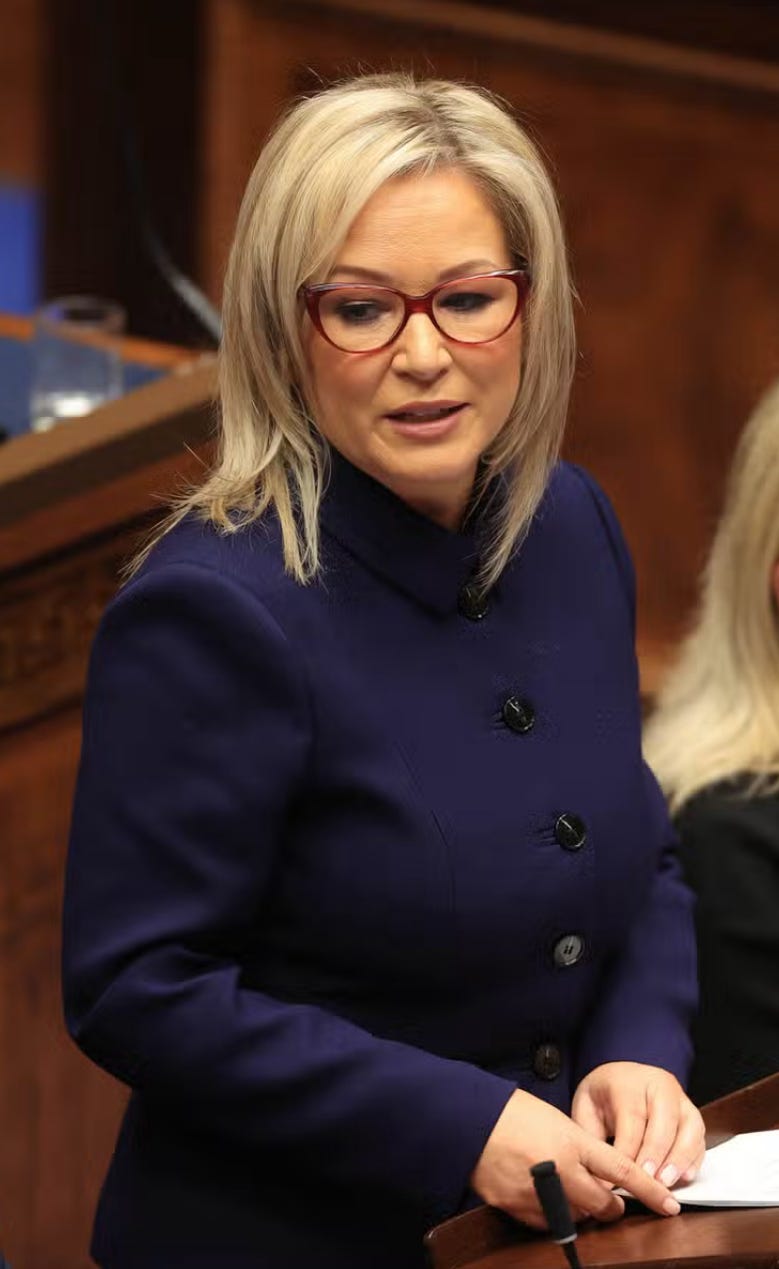Happy Sunday,
Two stories caught my eye these past few days and made me wonder: what does it take to be a leader who must bring about change, while under tremendous pressure to deliver results?
Other than ‘selfless bravery’, I can’t think of another personality trait that fits. I’d love to know your thoughts - Shoot me a message!
Not walking the talk
When fashion retailer H&M (owner of brands like H&M, and other stories, Cos, Arket etc) announced CEO Helena Helmersson was stepping down and being replaced by Daniel Ervér, effective immediately, the headlines claimed the news was a surprise. Daniel was/continues to be the head of the core H&M brand and an eighteen-year company veteran. Read more at Reuters
Then came the noise. From all sides.
A female CEO being replaced by a man! The patriarchy is alive and kicking!
She couldn’t handle the pressure!
She wasn’t aggressive enough to grow H&M!
She didn’t deliver profit targets!
But this time, was the noise, right?
After four years at the helm of the fashion giant Helena’s own words didn’t help. She said the role had been "very demanding" and she did not have the energy to continue.
It is telling in announcing Helena’s departure H&M featured Daniel Ervér claiming he’d voiced his interest in the job to the H&M board in December. When you put the two comments together, it frankly sounds like a board and a team at loggerheads with their CEO and looking for a replacement.
H&M’s head of sustainability since 2014, Helena was made CEO in 2020 to push the climate agenda forward. Here’s the conundrum she faced - How to balance H&M’s financial growth targets - to double sales from 2021 to 2030, while simultaneously halving its carbon footprint from 2019 to 2030? To a lay person, that goal doesn’t just sound challenging but an oxymoron.
Under her stewardship H&M focused on profitability rather than sales volumes recently, aiming to reach a 10% operating margin this year. But with sales lagging competitors like Inditex (owner of brands like ZARA, Bershka, Massimo Dutti, Oysho, Uterqüe) and Chinese rival Shein, H&M’s profitability actually fell in the fourth quarter, as did the stock and so rolled the head of its CEO.
On her watch, H&M’s also been taking quite a beating when it comes to action Vs. words when it comes to its circularity efforts. It’s been under legal fire, accused of overproduction and more often than not, greenwashing. But Helena was always clear (in public) that a fundamental change needs to happen in the business strategies of fashion companies for a sustainable circular model to really be successful.
That maybe where the board of H&M and Helena reached the proverbial fork in the road and consequently parted ways. That the core ideology of profitability has remained unchanged both within H&M and the fashion industry despite all the talk for needing change.
For example, last year around the same time that Helena was nominated as its Co-Chair The Fashion Pact saw some high profile, but quiet exits of the likes of Hermès, Selfridges and Stella McCartney. The CEO-powered Fashion Pact was launched at the G7 in 2019, designed to bring together the fashion industry’s big bosses to tackle the industry’s horrendous environmental footprint.
But for all the glitz, glamour and claims the Fashion Pact has barely made a dent in the past 4 years, with just a handful of pilot projects to show for its efforts and its latest report on climate friendly cotton being widely panned. Not exactly a beacon for change making.
Helena’s biggest handicap may have been that she got the job during a crisis (wait, for a female CEO what a surprise!). Taking over the world’s second biggest listed retailer during Covid and the following cost of living crisis means distractions like survival would have trumped any out of the box sustainability efforts. What happens next at H&M under Daniel Ervér will set a tone for where sustainability efforts go next for the fashion industry. He’s already promised to make H&M faster at fashion. Read more at The Financial Times
I do wish Helena could have been brave/braver. But who knows what pressure she was under. I can only think of the missed opportunity to change hearts and minds of shareholders and stakeholders. She could have changed fast fashion for a better world.
Could’ve, Would’ve. Should’ve. Now, we’ll never know (unless she lands at a more conducive brand).
Can they walk the talk
Northern Ireland finally has a working devolved government after two years.
It matters.
If you’re new to the issues of Northern Ireland, I’ve linked here more on the history of The Troubles and The Good Friday Agreement.
In 2022, a shock election result had Sinn Féin overtaking the Democratic Unionist Party (DUP) as the biggest party in Northern Ireland. Sinn Féin wants Northern Ireland to be reunified with Ireland, while Unionist DUP (it’s literally in their name) wants to remain a part of the United Kingdom.
A DUP boycott of power sharing resulted in no government being formed in Northern Ireland, as the two could not agree on post Brexit trade arrangements. That DUP boycott finally came to an end a few days ago after negotiations with the UK government. Four parties have now come together to finally form the government - Sinn Féin, the DUP, Alliance and the Ulster Unionist party (UUP).
Why does that matter to The Chief Brief - Well the deadlock has been broken with an all female leadership team now power sharing in Northern Ireland.
As you’ve probably been reading - Sinn Féin’s deputy leader and Irish nationalist Michelle O’Neill’s appointment as First Minister is the first time a non-unionist will be the boss in Northern Ireland (since the partition of Ireland in 1921). That’s why she is dominating the headlines.
The Deputy First Minister is also a woman. Emma Little-Pengelly, from the DUP is a former barrister and has taken up the job which has equal power but less prestige than First Minister. And because she comes from the side that has held the First Minister position all these years is also why you maybe seeing a little less of her in the news.
I’ll spare you the ins and outs of Michelle and Emma’s political affiliations, mentors and the political intrigue that brought them both to the top jobs. You can read more about Michelle at The Guardian and more about Emma at the BBC at your leisure.
What I and others have found fascinating over the weekend are the inaugural remarks made by both women, after years of government-less limbo.
From an IRA family, Michelle in her speech predictably touched on the discrimination of Catholics in Northern Ireland over the years. But the core of what she said was focussed on building bridges and the very real needs of the voting public. Her eye she said, was fixed on the future. The immediate goal? Getting the funds to create jobs and repair Northern Ireland’s crumbling infrastructure and services.
“I will serve everyone equally and be a first minister for all,” she said. “Wherever we come from, whatever our aspirations, we can and must build our future together. We must make power-sharing work because collectively, we are charged with leading and delivering for all our people, for every community.”
The very different viewpoint of Emma came at the start of her speech. She recounted witnessing the aftermath of an IRA bomb as a girl. But her speech quickly pivoted from there and was future focussed and all about improving public services.
“Michelle is an Irish republican, and I am a very proud unionist. We will never agree on those issues, but what we can agree on is that cancer doesn’t discriminate, and our hospitals need to be fixed. Let us be a source of hope to those young people watching today, not one of despair.”
That both women have chosen to focus on addressing Northern Ireland’s economic woes, rather than immediately hanging their hats on the core goals of their parties, is telling.
It takes approximately £13bn a year to run Northern Ireland’s public services, with 90% funded by the UK government. Money that hasn’t been disbursed for the past two years, since there was no government to disburse it to. As a result Northern Ireland is facing public sector pay disputes, a crumbling National Health Service (NHS), social housing shortfalls, childcare deserts etc.
These are women who know, to bringing a people together requires their core needs to be addressed first. Building bridges within communities is essential to any reconciliation process. And reconciliation is after all the first step in even considering a referendum for reunification (if that is the ultimate aim of Sinn Féin).
Whether they are successful and able to actually work together, beyond these initial euphoric headlines, global kudos for forming an all-women’s leadership team, participating in whirlwind interviews and glowing personality pieces, we’ll need to wait and see.
The future of two countries depends on them. I for one wish them luck.
Podcast Alert
Plastics Unwrapped Episode 1, 2 & 3 (since my takeover but labelled Episode 13, 14 & 15 in actual series count) are now LIVE - on the streaming network of your choice. I am also really proud of the fact that we have been able to stick to a 50/50 target for the guests on the show!
Listen to Tony Chambers and I talk about how design thinking is and can make Plastics more sustainable!
I know Tony will spark your interest, so make sure you listen to the brilliant Rosalie McMillan & Daniella Souza Miranda in conversation with me, about how design thinking is changing both company strategies and products, towards their goal of sustainability!
These chats about ‘Designing for sustainability’ brought up the critical issue of how we are dismally failing to handle our waste problem. So we took a deep dive into the challenge of collecting and sorting waste and building necessary infrastructure in the countries on the frontline of the waste problem with the author of UNEP’s Global Waste Management Outlook 2, Zoë Lenkiewicz and Regional Director in Africa for ChildFund International, Chege Ngugi.
Recycling and Beyond Part 2 will release on Tuesday, February 6th.
I’d love to know what you think of the podcast. I hope you’ll listen and send me your feedback. Do also let me know what you really want to hear and learn about when it comes to our plastic waste problem! That’s what the podcast is all about!






